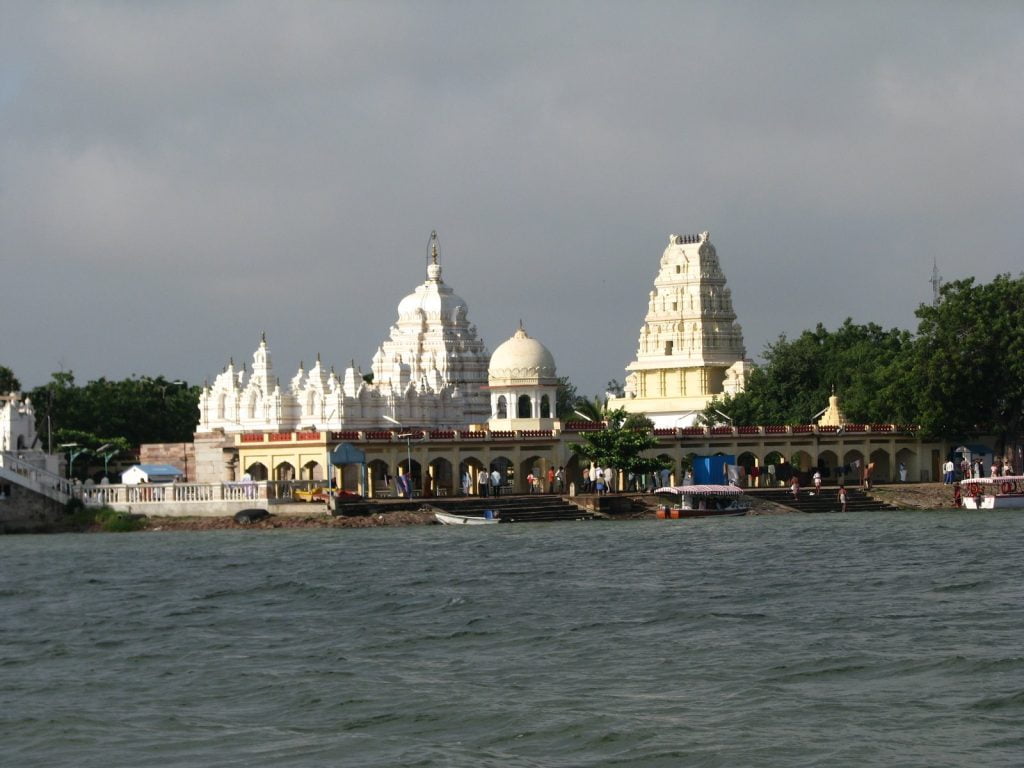Kudalasangama Temple is a special temple in Karnataka which is am the most important center of pilgrimage for the people who belongs to Lingayat faith.The holy Samadhi of Lord Basavanna, the founder of the Lingayat faith is found here. There is also a Linga, which is believed to be Swayambhu .
Shrine’s History
Kudalasangama is renowned for the ancient Shri Sangameshwara temple, which was built in the twelfth century by the Chalukya rulers. Originally this place was known as Kappadi Sangama. Shri Sangameshwara temple is dedicated to Basaveshwara, a renowned teacher and poet, born in the second century. Kudalasangama was his place of birth and hence the Hindus believe that this as a very important site. The great ascetic was also known as Ishanaguru. It is believed that in the 12th century Jathaveda Muni Sarangamath had established an education centre here and Basaveshvara, Channabasavanna and Akkanagamma were students.
Basaveshvara spent his childhood here and in later years after marriage, he is said to have become one with the God of this place. The vachanas composed by him are dedicated to the presiding god here, Sangamanatha. The place is a village concerning 19 kilometers from Hungund. Nearby is the holy pilgrim centre and the famous temple ofSangameshvara, on the stream bank, at the confluence of the Krishna and the Malaprabha rivers. Once it had been called Kappadi sangama where Basaveshwaras teacher Ishanaguru lived.
Architectural Relevance of This Shrine
The Kudala Sangameshwara temple consists of a structure, navaranga and the main shrine. The idols of Basaveshvara, Neelamma, Nandi and Ganapathi are placed in the navaranga. The door frame of the garbhagriha is richly carved with floral designs and animal figures. In the shrine, is the Linga famed as Sangameshvara or Sangamanatha. In front of the temple, on the inside of the stream, is a little stone mandapa with a Shivalinga in it, and lofty cement concrete drywall has been built around it to protect it from submersion. On the east, across the river Krishna, stands the Neelammas temple. She was the consort of Basaveshvara.
He built a high cement concrete drywall, designed around the structure to protect it from the waters. The temple of Shri Sangameshwara is full of beautiful stone carvings. The name Sangameshwara comes from the fact that this temple is situated on the meeting point of two rivers. This temple has intricate carvings and is a feast for the eyes. The temple has a Navagriha or the main temple and a porch. Animal figures and flowers have been inscribed on the doors of this temple. An inscription in the temple of 1213 A.D., records a gift to the god Acheshvara. Another stone record of 1160 A.D. refers to land grants to deities, Kaleshvara and Achesvara. Shri Sangameshwara temple is a beautifully stone carved temple here. Besides the religious significance attached to it, the temple is also a marvellous piece of art.
The temple premises comprise of a porch, the main temple and the Navagriha. The key idols that are found here are that of Basaveshwara, Neelamma, Ganesha and Nandi. His numerous tenets were all dedicated to the main deity Sangamanatha. A Shiva Linga with a small stone stupa stands just in front of the temple. During the festival of Mahashivratri, thousands of pilgrims take a dip at Kudalasangama, before going to the Shiva Linga, to seek blessings of Lord Shiva.
Shrine’s Map Location and How to Go There
By Road
Kudalasangama is easily accessible from Bijapur and Bangalore by road. Direct buses are available from all major places of Karnataka state. It is about a distance of 450km from Bangalore.
By Rail
The nearest railhead is located at Bijapur.
By Air
The nearest Airport is Bangalore.
Shrine Timings
05:00 to 12:30 to 16:00 to 20:00
Events Celebrated at This Shrine
Shivaratri February or March
Basava Kranthi January
The annual festival is conducted from February 15 to March 15 every year.
Extra Information About this Shrine
This is the place where the holy rivers, river Krishna and river Malaprabha merge and flow towards Srisailam temple.
The door Garbhagriha are richly carved with animal images and floral designs. Beside the main temple is a mandapa, houses a Shivalingam and cement concrete has been built around the lingam to protect it from the submersion. There is a huge spacious auditorium named Sabha Bhavana which has a seating capacity for about 6000 people. Nearby Temple Aihole Temple Bhutanatha group of Temples Durga temple Mahakuta group of Temples Pattadakal Temple
